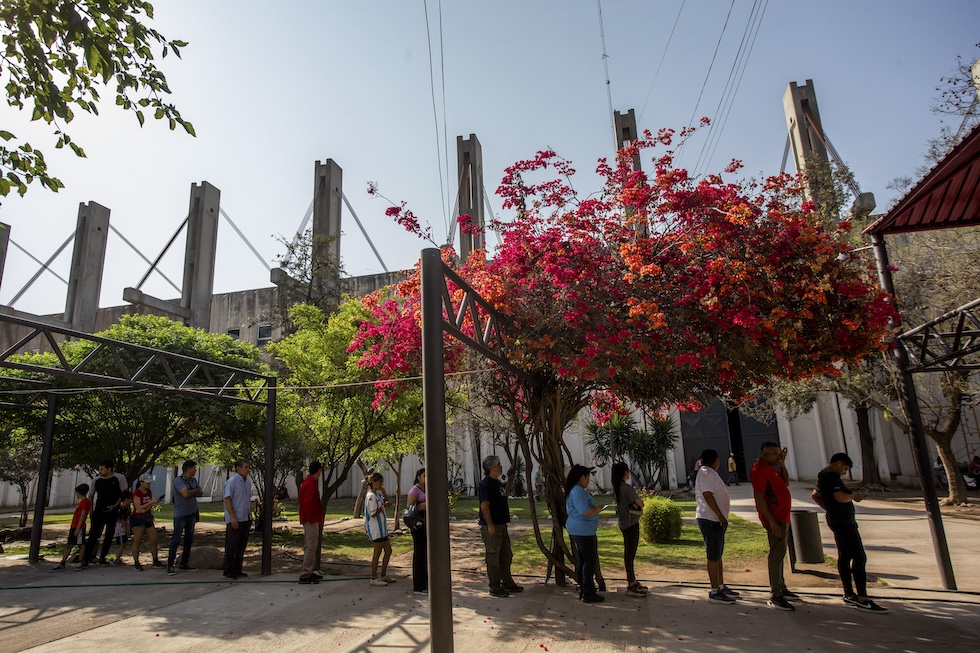The economic policies of Argentine President Javier Miley, inspired by an ultra-liberal vision, have in recent months led to some slight improvements in macroeconomic data, but to a further reduction in the funds available to the population to purchase basic necessities. And so a Increase in poverty. To respond to this crisis, the governor of La Rioja Province, in the northwest of the country and on the border with Chile, decided on an emergency solution: print its own currency, From him.
The chacho has been spreading in La Rioja province since last August, and is distributed to public employees as rewards to combat the economic crisis and inflation, and to pay part of their salaries. Governor Ricardo Quintilla, a left-wing populist and member of the Peronist party, also put it into circulation as a form of political protest, after the cuts in funds allocated to the provinces decided by Miley at the beginning of the year.
La Rioja is a particularly poor province in Argentina, known for producing nuts and olives: the average salary is just over 200 euros per month, and the poverty rate is 66 percent. The province has a population of only 384,000, but it has received more state public funds than any other province, with the exception of Buenos Aires: these funds represent 90% of the local budget, where two-thirds of the workers are public employees. The county has the few industries in the area, mines, some wineries, and cattle ranches.
The reduction in funds coming from the central government, decided by the Miley government to break what it describes as the vicious cycle of social welfare and state debt, has put many provinces in difficulty. Some local officials were forced to fire staff and cut services, while La Rioja Governor Quintilla decided to “fight back”, despite the province having officially declared bankruptcy since February.
“Chachos Accepted” sign (AP Photo/Natalia Diaz)
This new currency, the chacho, was then put into circulation, its name inspired by the military leader Angel Vicente “Chacho” Peñaloza, who opposed the forces coming from the capital during the civil wars of the 19th century. The value of the chacho is one peso, the banknotes range from one thousand to fifty thousand pesos, and every month the province distributes the equivalent of 40 euros to a large part of the population, as a reward (100 pesos is approximately equivalent to one euro).
Shops, distributors and commercial establishments are not obligated to accept them, but the government has strongly called on them to do so, and many of them have also signed up to revitalize their businesses, since widespread poverty and recession have reduced demand. Whoever spends it can register in specific records and then go to public offices to exchange it Peso. For those who hold them until December, the government promises 17 percent interest (in five months): each chacho will then be worth 1.17 pesos..
In this way the local government of La Rioja wants to circulate the money, even at a time when its coffers do not allow it, thus postponing the conversion to the “real” currency (i.e. the peso) until the end of the year. Despite the numerous queues to obtain it and the difficulties in finding affiliated stores where it can be spent, the bonus of 40 euros is considered too high a figure for many residents. Almost everyone tries to spend it immediately, whether to meet needs or for fear of depreciation and loss of the value of the chachu.

Waiting list for the reward in Chachoz (AP Photo/Natalia Diaz)
It is not clear at this time how the province intends to repay this additional debt. President Miley emphasized that La Rioja would not receive state aid, but also said that he could not counter the circulation of the chacho, since the Constitution provides for similar economic measures. This is not the first time this has happened: in 2000, facing a central government austerity plan similar to the current one, 12 different provinces (including La Rioja) issued their own currency. Then the economic crisis continued, until the country defaulted in 2001.
– Read also: In Argentina some things are bought in Chile

“Internet trailblazer. Travelaholic. Passionate social media evangelist. Tv advocate.”
